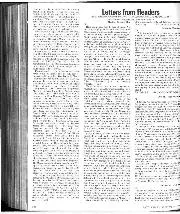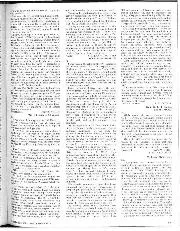

Letters from Readers, September 1979
Healthy Formula one Sir, Have you noticed that the face of Grand Prix racing is changing? Only a couple of years or so ago, darkness was all that could be…
A DAY WITH THE TESTERS
T, i IS , ” said our escort as we passed through two big
sliding doors. ” is the road test department—not the biggest section of our works, but one which is very important.”
. ” There have been a lot of changes in the methods employed in building cars in the past ten years or so, which save time and labour and overheads, but you can’t dispense with these fellows here if you’re going to turn out a first-rate job. Attempts have been made in the past, of course, to test chassis by ” synthetic ” means—on revolving tracks and so forth, but we stick to the old and sounder means—a real trial on the road, and our staff here know their work as—well, you will see for yourselves.” So saying, he left us. A row of Sleek, hare chassis was ranged along One side of the shop ; opposite, numerous people were busy lifting rough test bodies onto cars ready for the road, fitting canvas wings and making preliminary adjustments to brakes and engines. There was a C
pleasant medley of sounds, of running motors punctuated now and then by a crescendo roar as throttles were snapped open. It was all vaguely reminiscent of the start of a racing classic ; only the surroundings showed that it was part of a day’s work in an automobile factory.
” All ready,” said our driver, whose companion we were to be for the day. And we took our place in the mud-stained body. Some minor formalities were proceeded with concerning a ” Pass-out,” and we slipped quietly from the works and through the exit gates.
The First Mile.
In a brief while car No. A/1987 had covered the first mile of its life. ” Racer ! ” bawled an urchin, enthusiastically if inaccurately, inspired by the skimpy equipment of our vehicle. We threaded our way over tramlines and through the turmoil of weekday traffic jambs to come eventually to the open road and rural Hertfordshire. .So far our speed had been comparatively se
date, though the absence of a protecting windscreen gave us an impression of speed. “Well, how’s she shaping?” we asked. “Noisy second speed, and a bunch of flat spots, but it’s early yet to say,” was the laconic reply.
Each power unit is run on the bench for about eight hours before installation in a chassis, and though this test obviates the likelihood of a seizure, the first run on the road is done at moderate speeds. The loudpedal business comes later.
An hour passed and we pulled up for our first adjustment. and there was some smart work with spanners and a jet-key. A mile or so, and the process was repeated ; the flat spots were being located and removed. It seemed simple enough.
Then the rain started, and streams of liquid mud swept back from the wheels and rain lashed our faces. “Some job on a day like this, but you get used to it,” said our driver. A railway arch provided us with temporary if draughty shelter while the heavens opened. And the interval was used to check over tappet clearances and the brakes and to adjust the hand throttle control. Half-an-hour later we left the beaten track and swept onwards up a narrow winding lane. We were taking bends now in real T.T. style with our tail keeping up a steady One more car on the road. A brand-new chassis leaving the factory for its first test
ran.
slide. Deftly the wheel was spun from one lock to another as we slithered our way to the summit of a greasy leaf-strewn hill.
Presently our sojourn in the rural ways was ended and we came once more to a main road route, where the brakes were tried. There was a swift run up through the gears, the speedometer read 40 m.p.h., the brake pedal was depressed—and we found ourselves inspecting the scuttle at a range of k inch ! Well, they were O.K.
By now, lunch time was approaching, and we wended our way back to the works, and adjourned for an hour. Once more in the shop, the chief tester approached. “What’s that one like ? ” he inquired.
“Noisy second speed.”
” Give her another rim, and meet me at the hill at four o’clock.”
And so we went forth again, over the tram lines, through the traffic and onward to the broad highway. A/1987 was now no longer a fledgling, and she was given full throttle for the first time ; the low hum of the silky six changed to a fullblooded roar as we gathered speed. Never mind the mud and the rain and the chilling wind—it’s a great life this testing !
Four o’clock came and we met the ” chief ” at the hill with a crowd of other mud-bespattered fellows.
The ” chief ” took over and drove o-Ar car up and down the gradient. Then came the verdict—” Throw her out ! “
” What happens now ? “we asked. “Oh, we’ll take her back to the works, and .she’ll go in the reject department for that second speed. Then I’ll have her out again in a day or two for another nm.”
” And ” he added, “If she doesn’t come up to standard then—well she’ll go back again.”
The reject department, it was explained, is solely concerned in rectifying the faults diagnosed and reported by the road test department, and like the latter, the former works to a high standard.
Back in the factory once more, we turned to go. “Good-bye, A/1987 ” we said, “we may yet meet again—at Brooklands, Ulster, anywhere—who knows ? “